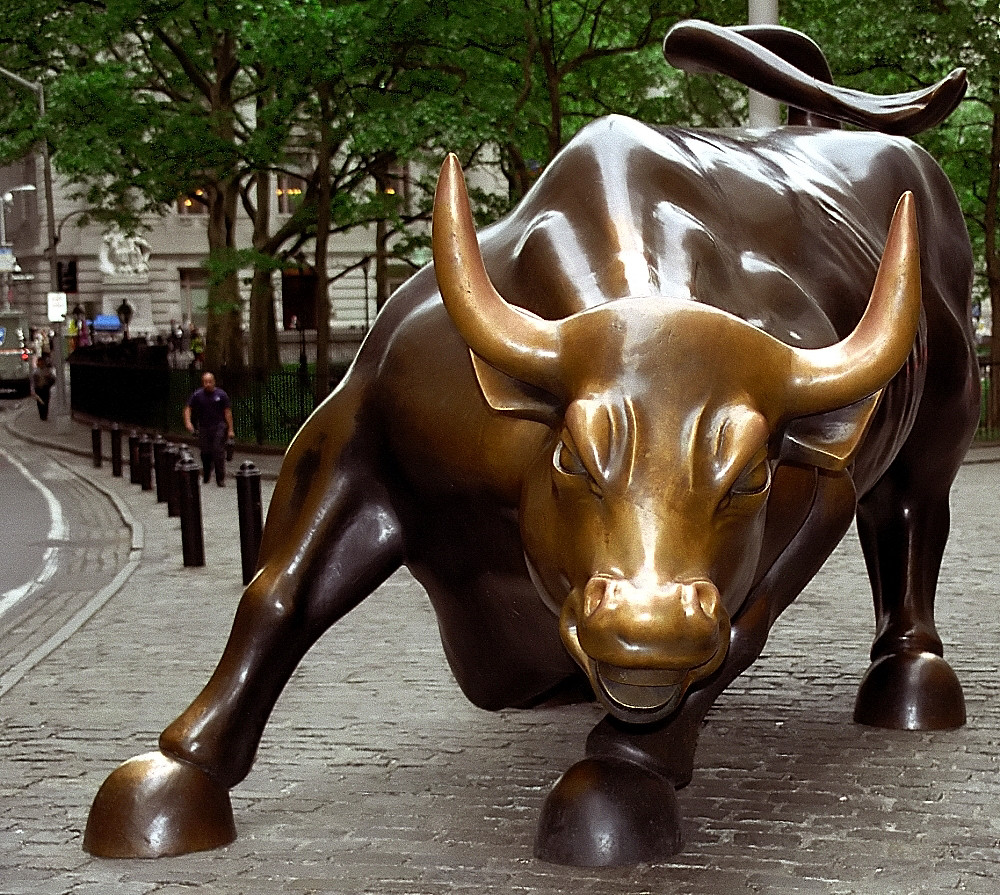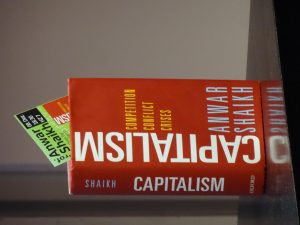An Abundance of Wealth and a Scarcity of Capital: Resolving the Paradox
✑ NICK JOHNSON ` ╱ ± 7 minutes

One of the major economic phenomena of our time seems to be an enormous accumulation of elite wealth, while output and productivity growth have been mediocre. In his book Capitalism without Capital, Alan Shipman explains why.

Such trends will prove unsustainable.
One of the major economic phenomena of our time seems to be an enormous accumulation of elite wealth, while output and productivity growth have been mediocre. In his book Capitalism without Capital, Alan Shipman explains why.
From: The Political Economy of Development, Nov. 12, 2019 ╱ About the author
Nick Johnson has an MSc in development economics from SOAS, University of London, works for a charity, is passionately interested in economics and how it can be used to promote sustainable human progress. His personal blog: The Political Economy of Development. On twitter@nickj_econ.
One of the major economic phenomena of our time seems to be an enormous accumulation of elite wealth amidst rising inequality within nations, even while output and productivity growth, particularly since the Great Recession, have been mediocre across much of the world.
In his book Capitalism without Capital, Alan Shipman draws together a wealth of economic ideas, from the theory of the global savings glut and the Cambridge controversies in the theory of capital to Thomas Piketty’s writings on inequality, to argue that we are living in an era of abundant ‘wealth’ alongside a shortage of real productive capital assets. It is growth in the latter which remains the driver of rising living standards for the majority.
Shipman spends some time discussing the meanings of wealth and capital, something that remains neglected in mainstream economics. He critiques Piketty’s conflation of the two, arguing that assets such as housing can be wealth but that their value does not contribute much to rising living standards and capital accumulation in the long run. Fluctuations in house prices tend to redistribute wealth rather than create it for the economy as a whole. Housing, and financial assets more broadly, are subject to ‘capital’ gains and losses, which confuses matters when it comes to separately defining wealth and capital.
The global savings glut hypothesis holds that a surplus of aggregate savings over investment in economies such as China, Japan and Germany, particularly in the early 2000s, depressed interest rates across the world, creating booms in asset prices in many economies, firstly in financial markets, and then in housing. These helped to boost economic growth for a while, but ultimately proved unsustainable when the associated trend of rising debt itself proved impossible to sustain.
Much of these excess savings thus found their way into financial assets rather than investment in new capacity to drive faster growth in productive activity. Incentives to invest in new productive capital seem to have diminished while increased financial wealth has encouraged asset-price inflation in expectation of further price rises.
This asset-price inflation has fed on itself and diminished incentives to invest in expanding real production capacity. There has thus arisen a surplus of investible wealth alongside a shortage of funds for industrial investment. To put it another way, we have a scarcity of real capital goods alongside an increasing concentration of wealth due to asset-price inflation and a scarcity of the issue of new financial assets to fund increased productive investment.
This process is unsustainable, since ultimately financial asset price appreciation relies on real economic growth, which in turn depends on rising productivity from increased productive investment. Despite the modern broadening of the definitions of capital into such fields as human capital, social capital and so on, investment in new equipment and capacity still seems to be vital to rising living standards in rich and poor countries alike. But today’s world economy sees a disconnect between wealth and capital, separately defined.
Shipman’s book discusses all sorts of issues and raises questions which it does not attempt to answer. But the one I will attempt to answer is the cause of the investment slump inasmuch as it relates to the savings glut. For me, the most convincing argument is that the savings glut itself is the flip-side of underconsumption, or a reduction in the consumption share of GDP relative to production.
The difference between consumption and production is savings. If these savings are not matched by investment in new productive capacity, this can weaken domestic demand. Alternatively, the excess of savings can find their way into speculation on financial assets, or can be exported abroad. Since global savings and investment must balance, an excess of savings over investment in one country must mean that there is an excess of investment over savings in the rest of the world. If the surplus savings are indeed exported from the original country, they will produce some combination of increased investment, reduced savings (and hence increased consumption) and increased debt in the rest of the world.
The trends described above have reduced productive investment opportunities in economies such as China and Germany. Although investment rates in China have been very high, a number of economists have argued that much of this has in the last decade or so been unproductive, and an already slowing economy will therefore continue to slow further.
In Germany, surplus savings in excess of investment have been absorbed abroad through demand for its exports to satisfy foreign consumption and investment spending, generating and sustaining a large current account surplus. But as world trade slumps amid rising protectionism, this surplus will shrink, as seems to be happening at the moment. Germany will have to look more to domestic demand in order to sustain future growth. Lower savings and higher consumption, as well as higher investment, not least in long-neglected infrastructure, should be the aim of policy if growth is to be restored in a more sustainable fashion.
It may well be that the forces leading to greater concentrations of wealth have given rise to savings which cannot be absorbed by productive investment. Wealthier individuals spend a smaller proportion of their income than poorer ones, while many large corporations are sitting on huge piles of unspent cash that are being neither consumed nor used for new investment.
These trends are tending to create underconsumption, which reduces incentives for firms to invest in order to expand productive capacity. Thus a savings glut produces a surplus of wealth and constrains investment at the global level, so that growth becomes limited by a structural shortage of demand. This can be temporarily overcome by rising debt, but if this merely fuels asset-price bubbles rather than productive investment, or finds its way into real but unproductive investment, it will prove unsustainable. Investment is then constrained by underconsumption rather than a shortage of savings. It seems to be this which has produced the trends identified by Shipman and others.
The linked trends of rising inequality, debt and asset-price bubbles which led to this century’s Great Recession also characterised those which preceded the Great Depression of the 1930s. It took a second world war to galvanise support for more interventionist economic policies at the national and international levels, which for a time produced full employment, lower inequality and historically rapid rates of economic growth in many capitalist countries. The ‘Golden Age’ lasted for more than 20 years before it came under severe strain in the 1970s and the political winds changed. It may be time to reexamine the lessons of that period in order to inform a shift in today’s political economy, before conflict over trade and technology, which is one result of weak global demand, spills over into something worse.
Reversing the worst of the destructive economic and social trends ushered in by the neoliberal turn of the 1980s requires reducing inequalities of income and wealth so that more funds flow sustainably into demand for the production of goods and services rather than for financial assets.
In his book Capitalism without Capital, Alan Shipman draws together a wealth of economic ideas, from the theory of the global savings glut and the Cambridge controversies in the theory of capital to Thomas Piketty’s writings on inequality, to argue that we are living in an era of abundant ‘wealth’ alongside a shortage of real productive capital assets. It is growth in the latter which remains the driver of rising living standards for the majority.
Shipman spends some time discussing the meanings of wealth and capital, something that remains neglected in mainstream economics. He critiques Piketty’s conflation of the two, arguing that assets such as housing can be wealth but that their value does not contribute much to rising living standards and capital accumulation in the long run. Fluctuations in house prices tend to redistribute wealth rather than create it for the economy as a whole. Housing, and financial assets more broadly, are subject to ‘capital’ gains and losses, which confuses matters when it comes to separately defining wealth and capital.
The global savings glut hypothesis holds that a surplus of aggregate savings over investment in economies such as China, Japan and Germany, particularly in the early 2000s, depressed interest rates across the world, creating booms in asset prices in many economies, firstly in financial markets, and then in housing. These helped to boost economic growth for a while, but ultimately proved unsustainable when the associated trend of rising debt itself proved impossible to sustain.
Much of these excess savings thus found their way into financial assets rather than investment in new capacity to drive faster growth in productive activity. Incentives to invest in new productive capital seem to have diminished while increased financial wealth has encouraged asset-price inflation in expectation of further price rises.
This asset-price inflation has fed on itself and diminished incentives to invest in expanding real production capacity.If we accept a functional separation of the meanings of wealth and capital, growth in the value of the former has exceeded the latter. As a result there has been a relative shortage of supply of new assets “capable of reliably storing and augmenting wealth” according to Shipman, producing asset-price inflation and attracting new savings into financial assets.
This asset-price inflation has fed on itself and diminished incentives to invest in expanding real production capacity. There has thus arisen a surplus of investible wealth alongside a shortage of funds for industrial investment. To put it another way, we have a scarcity of real capital goods alongside an increasing concentration of wealth due to asset-price inflation and a scarcity of the issue of new financial assets to fund increased productive investment.
This process is unsustainable, since ultimately financial asset price appreciation relies on real economic growth, which in turn depends on rising productivity from increased productive investment. Despite the modern broadening of the definitions of capital into such fields as human capital, social capital and so on, investment in new equipment and capacity still seems to be vital to rising living standards in rich and poor countries alike. But today’s world economy sees a disconnect between wealth and capital, separately defined.
Shipman’s book discusses all sorts of issues and raises questions which it does not attempt to answer. But the one I will attempt to answer is the cause of the investment slump inasmuch as it relates to the savings glut. For me, the most convincing argument is that the savings glut itself is the flip-side of underconsumption, or a reduction in the consumption share of GDP relative to production.
The difference between consumption and production is savings. If these savings are not matched by investment in new productive capacity, this can weaken domestic demand. Alternatively, the excess of savings can find their way into speculation on financial assets, or can be exported abroad. Since global savings and investment must balance, an excess of savings over investment in one country must mean that there is an excess of investment over savings in the rest of the world. If the surplus savings are indeed exported from the original country, they will produce some combination of increased investment, reduced savings (and hence increased consumption) and increased debt in the rest of the world.
|
|---|
The trends described above have reduced productive investment opportunities in economies such as China and Germany. Although investment rates in China have been very high, a number of economists have argued that much of this has in the last decade or so been unproductive, and an already slowing economy will therefore continue to slow further.
In Germany, surplus savings in excess of investment have been absorbed abroad through demand for its exports to satisfy foreign consumption and investment spending, generating and sustaining a large current account surplus. But as world trade slumps amid rising protectionism, this surplus will shrink, as seems to be happening at the moment. Germany will have to look more to domestic demand in order to sustain future growth. Lower savings and higher consumption, as well as higher investment, not least in long-neglected infrastructure, should be the aim of policy if growth is to be restored in a more sustainable fashion.
It may well be that the forces leading to greater concentrations of wealth have given rise to savings which cannot be absorbed by productive investment. Wealthier individuals spend a smaller proportion of their income than poorer ones, while many large corporations are sitting on huge piles of unspent cash that are being neither consumed nor used for new investment.
These trends are tending to create underconsumption, which reduces incentives for firms to invest in order to expand productive capacity. Thus a savings glut produces a surplus of wealth and constrains investment at the global level, so that growth becomes limited by a structural shortage of demand. This can be temporarily overcome by rising debt, but if this merely fuels asset-price bubbles rather than productive investment, or finds its way into real but unproductive investment, it will prove unsustainable. Investment is then constrained by underconsumption rather than a shortage of savings. It seems to be this which has produced the trends identified by Shipman and others.
Reversing the worst of the destructive economic and social trends ushered in by the neoliberal turn of the 1980s requires reducing inequalities of income and wealth.Greater inequality can be both cause and consequence of asset-price bubbles. It will tend to reduce consumption and raise savings relative to investment in some countries, while producing stronger consumption and lower savings in others. If there is a resultant dearth of opportunities for productive investment in new capacity, then even as demand for goods and services is reduced, demand for financial assets as an outlet for excess savings can rise, boosting their prices and further concentrating wealth and raising inequality. Such trends will prove unsustainable as it becomes evident that higher financial asset prices are not being reflected in higher investment and production in the real economy.
The linked trends of rising inequality, debt and asset-price bubbles which led to this century’s Great Recession also characterised those which preceded the Great Depression of the 1930s. It took a second world war to galvanise support for more interventionist economic policies at the national and international levels, which for a time produced full employment, lower inequality and historically rapid rates of economic growth in many capitalist countries. The ‘Golden Age’ lasted for more than 20 years before it came under severe strain in the 1970s and the political winds changed. It may be time to reexamine the lessons of that period in order to inform a shift in today’s political economy, before conflict over trade and technology, which is one result of weak global demand, spills over into something worse.
Reversing the worst of the destructive economic and social trends ushered in by the neoliberal turn of the 1980s requires reducing inequalities of income and wealth so that more funds flow sustainably into demand for the production of goods and services rather than for financial assets.
| Top image: Cover of The Nonpartisan Leader, 2 May 1921. From: John Miller Baer (1886 - 1970) / Wikimedia |
|---|























Comments
Post a Comment
Your thoughts...